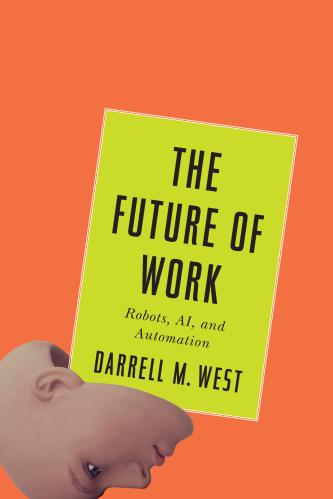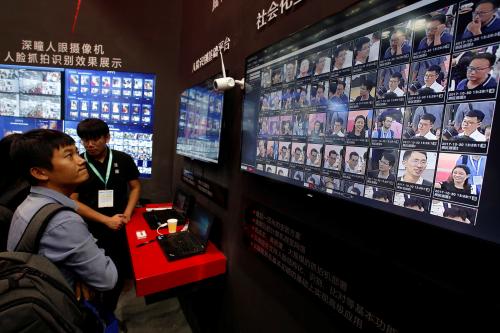Governance Studies at the Brookings Institution will host the eighth annual John Hazen White Forum on public attitudes towards U.S. manufacturing on July 17 from 2:00 PM-4:00 PM EDT. Register here to attend the event in person or to watch the live webcast.
Manufacturing is a crucial part of the U.S. economy. According to the U.S. census, around 11.1 million workers are employed in the sector, and it generates about $5.4 trillion in economic activity annually. Yet this area currently faces significant headwinds. The June IHS Markit Manufacturing Purchasing Managers Index fell to its worst reading since 2009 and there have been recent declines in the Institute for Supply Management’s Purchasing Managers Index. There also is concern due to the 25 percent tariffs President Donald Trump has imposed on Chinese goods and his threats to increase tariffs on other nations.
To examine attitudes toward manufacturing, researchers at the Brookings Institution undertook an online U.S. national poll with 2,001 adult internet users between June 16 to 18, 2019. The survey was overseen by Darrell M. West, vice president of Governance Studies, director of the Center for Technology Innovation, director of the John Hazen White Manufacturing Initiative at the Brookings Institution, and the author of The Future of Work: Robots, AI, and Automation. Responses were weighted using gender, age, and region to match the demographics of the national internet population as estimated by the U.S. Census Bureau’s Current Population Survey.
Vital Part of the Economy
Reflecting the important role manufacturing plays in the U.S. economy, the survey asked how people feel about the sector. Fifty-eight percent believe manufacturing is very important to the American economy, 14 percent think it is somewhat important, 6 percent feel it is not very important, and 22 percent are unsure.
There are significant differences by age. Seventy-one percent of people over the age of 55 believe manufacturing is very important, whereas only 45 percent of those aged 18 to 34 years feel that way. That is a 26 percentage point difference in feelings about the subject between these age groups.
When asked overall how positive or negative they feel towards manufacturing, 58 percent say they are positive, 10 percent are negative, and 32 percent are unsure.
Confidence in the Future
The poll also inquired about feelings regarding the future. Only 17 percent say they are very confident about the future of manufacturing, 48 percent are somewhat confident, 14 percent are not confident at all, and 21 percent are unsure.
There are some differences by background. People in the Midwest (19 percent) are most likely to be very confident about the future of manufacturing, compared to those in the Northeast (14 percent). Women (14 percent) also are less likely to say they are very confident about manufacturing, compared to men (21 percent).
Forty-seven percent would encourage young people to get a job in the manufacturing sector, 20 percent would not, and 33 percent are unsure.
Biggest Barriers
When asked about the biggest barrier to the manufacturing sector, 23 percent cite government regulations, 21 percent say poorly trained workers, 14 percent name high taxes, 8 percent claim energy costs, and 34 percent are unsure.
Trump’s Tariffs
People are divided over President Donald Trump’s decision to impose 25 percent tariffs on Chinese goods. Forty-five percent oppose his decision, 35 percent support them, and 20 percent are unsure.
Women (30 percent) are less likely to support the tariffs than men (41 percent). Older people (42 percent) are more supportive than younger ones (27 percent). Those living in the South are more likely to support the tariffs (42 percent) than those in the Northeast (29 percent) or West (31 percent).
When asked how big a threat China is to U.S. manufacturing, 46 percent say it is a very big threat, 30 percent claim it is somewhat big, 8 percent think it is not a very big threat, and 16 percent are unsure.
The Rise of Automation
Sixty-four percent think there will be a lot of automaton in manufacturing 10 years from now, 13 percent believe there will be some automation, 5 percent say there will not be very much, and 18 percent are unsure.
Government Should Provide More Help
Fifty percent think the government should do more to help the manufacturing sector, 16 percent do not, and 34 percent are unsure.
View of Manufacturing News Coverage
Thirty-seven percent say news coverage of manufacturing has been negative, 10 percent feel it has been positive, and 53 percent are unsure.
Survey Questions and Answers
1. How important do you think the manufacturing sector is to the vitality of the U.S. economy?
- 6% not very important
- 14% somewhat important
- 58% very important
- 22% don’t know or no answer
2. Is your opinion of manufacturing?
- 5% very negative
- 5% somewhat negative
- 31% somewhat positive
- 27% very positive
- 32% don’t know or no answer
3. Would you encourage a young person today to get a job in the manufacturing sector?
- 8% definitely no
- 12 possibly no
- 26% possibly yes
- 21% definitely yes
- 33% don’t know or no answer
4. What do you see as the biggest barriers to the manufacturing sector today?
- 14% high taxes
- 23% government regulations
- 8% energy costs
- 21% poorly trained workers
- 34% don’t know or no answer
5. Do you think the government should do more to help the manufacturing sector?
- 7% definitely no
- 9% possibly no
- 25% possibly yes
- 25% definitely yes
- 34% don’t know or no answer
6. Do you support President Donald Trump’s decision to impose 25 percent tariffs on goods made in China?
- 34% definitely no
- 11% possibly no
- 12% possibly yes
- 23% definitely yes
- 20% don’t know or no answer
7. How big a threat do you believe China is to the U.S. manufacturing sector?
- 8% not very big
- 30% somewhat big
- 46% very big
- 16% don’t know or no answer
8. Would you say news media coverage of the manufacturing sector is?
- 15% definitely negative
- 22% possibly negative
- 7% possibly positive
- 3% definitely positive
- 53% don’t know or no answer
9. How confident are you in the future of manufacturing?
- 14% not confident at all
- 48% somewhat confident
- 17% very confident
- 21% don’t know or no answer
10. How much automation do you think there will be in manufacturing 10 years from now?
- 5% not very much
- 13% some
- 64% a lot
- 18% don’t know or no answer
Gender:
- 55.1% male, 44.9% female in sample
- 48.1% male, 51.9% female in target population
Age:
- 7.4% 18-24, 13.2% 25-34, 17.7% 35-44, 22.6% 45-54, 20.2% 55-64, 18.9% 65+ in sample
- 12.6% 18-24, 19.4% 25-34, 17.5% 35-44, 17.6% 45-54, 16.7% 55-64, 16.2% 65+ in target population
Region:
- 14.9% Northeast, 28.8% Midwest, 34.7% South, 21.6% West in sample
- 17.3% Northeast, 21.3% Midwest, 37.5% South, 23.9% West in target population
Survey Methodology
This online survey polled 2,001 adult internet users in the United States June 16 to 18, 2019 through the Google Surveys platform. Responses were weighted using gender, age, and region to match the demographics of the national internet population as estimated by the U.S. Census Bureau’s Current Population Survey.
In the 2012 presidential election, Google Surveys was the second most accurate poll of national surveys as judged by polling expert Nate Silver. In addition, the Pew Research Center undertook a detailed assessment of Google Surveys and found them generally to be representative of the demographic profile of national internet users. In comparing Google Survey results to its own telephone polls on 43 different substantive issues, Pew researchers found a median difference of about three percentage points between Google online surveys and Pew telephone polls. A 2016 analysis of Google Surveys published in the peer-reviewed methodology journal Political Analysis by political scientists at Rice University replicated a number of research results and concluded “GCS [Google Consumer Surveys] is likely to be a useful platform for survey experimentalists.” Google’s 2019 analysis of its surveys found similar results to Pew Research Center polls.
This research was made possible by Google Surveys, which donated use of its online survey platform. The questions and findings are solely those of the researchers and not influenced by any donation. For more detailed information on the methodology, see the Google Surveys Whitepaper.
The Brookings Institution is committed to quality, independence, and impact.
We are supported by a diverse array of funders. In line with our values and policies, each Brookings publication represents the sole views of its author(s).












Commentary
Brookings survey finds 58% see manufacturing as vital to US economy, but only 17% are very confident in its future
July 9, 2019